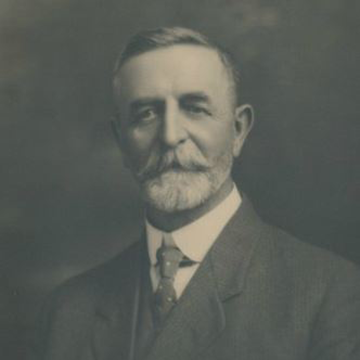William Grayson was one of the original pioneers of Moose Jaw, and during his 43 years here, he contributed to building up its legal, civic, and educational industries.
In particular, he founded the law firm Grayson and Company in 1883, served as mayor in 1903 and — among other educational initiatives — laid the cornerstone for a school of the same name in 1925.
His local and provincial contributions caught the attention of John Hawkes, the provincial legislative librarian, who included a biography of the lawyer in the three-volume series “The Story of Saskatchewan and Its People,” released in 1924.
Grayson was 68 years old when Hawkes wrote the biography and noted that the lawyer’s age made him the oldest active barrister in Saskatchewan.
“The consensus of public opinion accords him a high rank among the leading citizens of Moose Jaw and Saskatchewan as befitting a man who has spent a lifetime in the upbuilding of this section of the Canadian West,” Hawkes said.
That biography — and hundreds of other provincial pioneers — is now on The Saskatchewan Genealogy Web (SaskGenWeb) webpage, which volunteers operate and update regularly.
Parts of that biography are featured here.
Early days
William Grayson was born in Yorkshire, England, in 1856 and was the first of five children of Michael and Ann (Kirk) Grayson. The family later moved to London, Ont., when the lad was still a youth.
After completing his schooling, William turned to law and successfully completed his exams at Osgoode Hall Law School in Toronto before receiving the call to the bar in 1883. The young barrister began his career in Winnipeg but moved to Moose Jaw that same year, where he “hung up his shingle.”
Grayson served Moose Jaw and surrounding communities for many years, later forming a partnership with Charles Ernest Armstrong, Thomas Emerson, and Lester McTaggart.
Meanwhile, his parents moved to The Friendly City in 1900 and became members of the Methodist Church, while his father supported the Liberal Party. William also supported both organizations during his life.
Career recognition
Grayson’s legal abilities “met with merited success,” and he became well-recognized. The provincial government named him a Crown prosecutor in 1904, a position he held until 1912.
A year later, the province appointed him as a King’s Counsel (K.C.), a designation given to lawyers who have demonstrated a commitment to the pursuit of legal excellence in service to the Crown, the public and their communities.
He was also public administrator for the Moose Jaw district for more than 20 years.
When Grayson came west, he determined to “cast in his lot” with the region for better or worse and subsequently enjoyed the material rewards that came from supporting the development of a new and rich country, Hawkes wrote.
He had extensive regional farming interests and invested heavily in Moose Jaw property that many regarded as first class, including several business blocks that yielded large revenues. He was also the director of the Saskatchewan Loan and Insurance Company and the Executors and Administrators Company.
“Mr. Grayson (was) a loyal supporter of the Liberal Party, but he has never gone in for politics and has held only such offices as bear a direct relation to the civic welfare,” his biographer wrote.
He served on the public school board for decades, including 30 years on the Central Collegiate Institute (CCI) board and 20 years as chairman of the joint public schools/CCI board.
Family life
In 1885, Grayson married Ellen Babb of Mitchell, Ont., and together they had eight children:
- William Murrey, a farmer who served in the Second World War
- Jean, who married a financial agent from Toronto
- Ethel, who graduated from Toronto University with degrees in writing
- Charles Douglas, a barrister with his father who served in the First World War
- Vera, the wife of local barrister Lester McTaggart
- Margaret, a graduate of Stout Institute of Home Economics of Menominee, Wisconsin
- Frederick Russel, who served in the First World War
- Thomas Howard, a student
Interests and hobbies
Grayson joined the Prairie Club and the Benchers Law Society of Saskatchewan. He enjoyed studying art and acquired one of the best picture collections in Western Canada, Hawkes wrote.
Moose Jaw was fortunate to have a resident with the means and taste to collect pictures and objects d’art, “for in any new community, the emphasis laid on cultural attainments is slight at first, and too often, the younger generation is reared with little appreciation of the finer things of art, music and literature,” the biographer continued.
Grayson’s private gallery also had the potential to have a bigger influence in Western Canada than in the East because public galleries and institutional collections in Ontario overshadowed most private efforts, Hawkes wrote.
Hawkes added that all of Grayson’s public and professional contributions and intellectual affairs “stamp(ed) him as a gentleman of culture and refinement.”
Grayson died at age 70 in 1926.
In response to some providers blocking access to Canadian news on their platforms, our website, MooseJawToday.com will continue to be your source for hyper-local Moose Jaw news. Bookmark MooseJawToday.com and sign up for our free online newsletter to read the latest local developments.




